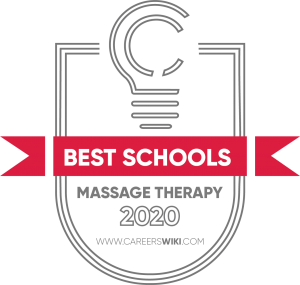…
Maine has several massage therapy schools. The two we recommend are are privately owned institutes with certificate programs that take less than one year to complete.
Students attend classroom lectures, receive hands-on training in labs, and gain practical experience in clinics that serve the public. Graduates are eligible to apply to the state board for licensure.
Massage therapy is a growing field in the Pine Tree State. Government labor experts believe that 70 additional jobs will be available annually through 2026.
If you would like to find the best massage therapy school in another state, click here.

This agency oversees major industries, as well as professions and occupations that provide services to the public. It protects consumers by licensing, examining, and auditing activities; responding to consumer complaints; investigating alleged violations of the law; disciplining offenders; and conducting outreach programs to inform residents of their rights.
The PFR determines requirements involving education, examinations, and other factors for prospective massage therapists. It issues licenses and ensures that practitioners renew them. The department also approves MT schools with programs that satisfy curriculum requirements, posting a list on its website.
To become a massage therapist in Maine, it is essential to first obtain a high school diploma or earn a general education diploma. A student then needs to find an accredited school that the PRI has approved.
The state PFR department mandates that a curriculum feature 500 or more content hours. This must include 120 hours in anatomy, physiology, and pathology; and 100 hours of clinical practice. MT theory, technique, and practice instruction is to cover gliding strokes, kneading, direct pressure, deep friction, superficial warming techniques, percussion, compression (pumping), vibration, jostling, shaking, rocking, contraindications, benefits, universal precautions, body mechanics, business, history, ethics, and legalities of massage and professional standards regarding draping and modesty.
Maine schools exceed content hour minimum by giving students more choices to specialize in certain massage techniques. Some programs include multiple classes in business practices and career development, or involve additional time in real-world clinical settings.
Graduates apply to the PFR for licensure. They need to show proof of CPR and first aid certification. Another requirement is passing the Massage and Bodywork Licensing Examination, commonly known as the MBLEx. The National Certification Board for Therapeutic Massage and Bodywork registers students to take the test at Pearson VUE assessment centers.
Working professionals are required to renew licenses online each year. Unlike in most states, they do not need to receive continuing education.
We selected the schools below based on the programs that they offer, accreditation, student population, graduation rate and reputation.
View our Ranking Methodology to learn more about how we rank schools.

74%
50
This institution offers three programs, including a certificate in massage therapy. The curriculum totals 750 content hours — 420 in lectures, 200 in labs, and 130 in an internship. It involves 25 weeks of full-time day classes.
Beyond coursework the state department mandates, students take Career Development; CPR & First Aid; Personal Psychology; Seated Massage; Complementary Bodyworks; Assessments, Care Plans & Special Populations; and The Business of Massage.
One of the school’s admission requirements for prospective massage therapists is a minimum score of 15 on the Wonderlic Scholastic Level Exam (SLE).
80%
209
Future practitioners at this school have two certificate options, each with 600 content hours.
The curriculum covers the basics plus myofascial release, hydrotherapy, business skills, professional development, holistic integration, and neuromuscular therapy. Students learn massage techniques such as Swedish, chair, event sports, stones, and oncology.
The holistic massage program includes 120 hours in polarity therapy and RYSE. It is designed for working with spa clients, children, seniors, “those trying to access creativity,” and “those seeking personal transformation.” The therapeutic massage program, with 120 hours in deep tissue massage and trigger point release, is for treating physically active people like athletes.
$19
$32,440
11%
The median pay for a massage practitioner here is about $39,440 per year (or $19 an hour) — a little below the national average of over $41,400 (or around $20).
Income among the leading 10% of Maine practitioners is approximately $68,750 (or more than $33). The nationwide median is about $78,300 (or over $37.60). The lowest 10% of earners in the state make around $26,160 (or nearly $12.60), better than the U.S. average of about $21,340 (or more than $10.25).
Jobs for massage therapists in Maine totaled 620 in 2016. The federal government’s Bureau of Labor Statistics foresees 690 positions by 2026, an 11 percent rate of growth. That would be slower than the projected national rate of 26 percent.
Sources: U.S. Bureau of Labor Statistics, CareerOneStop

LIMITED TIME DEAL